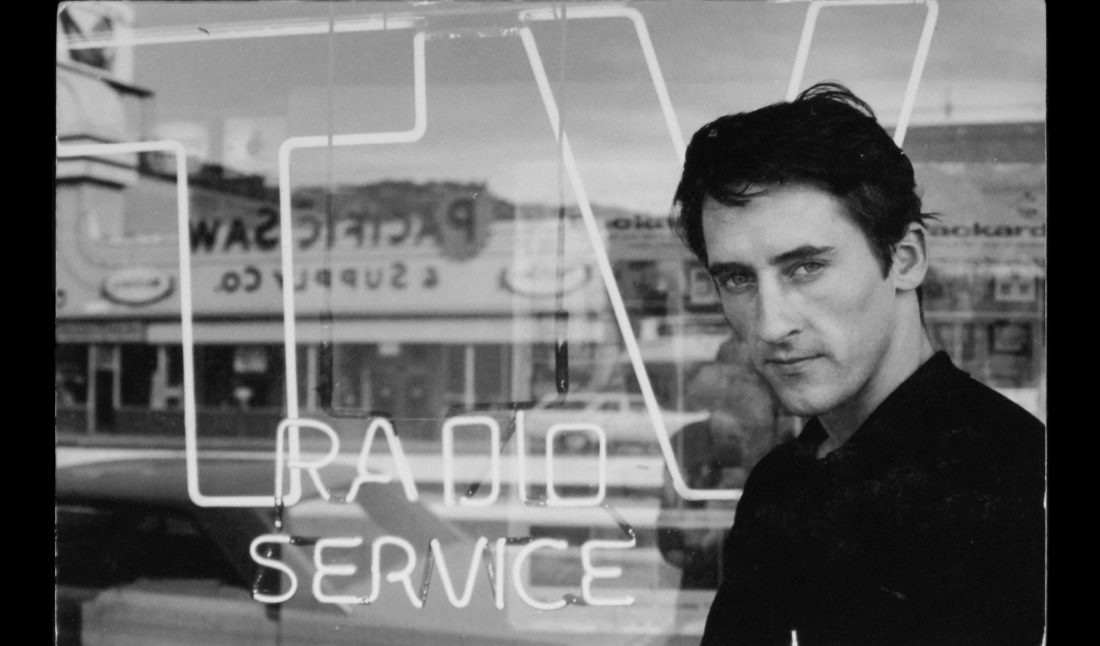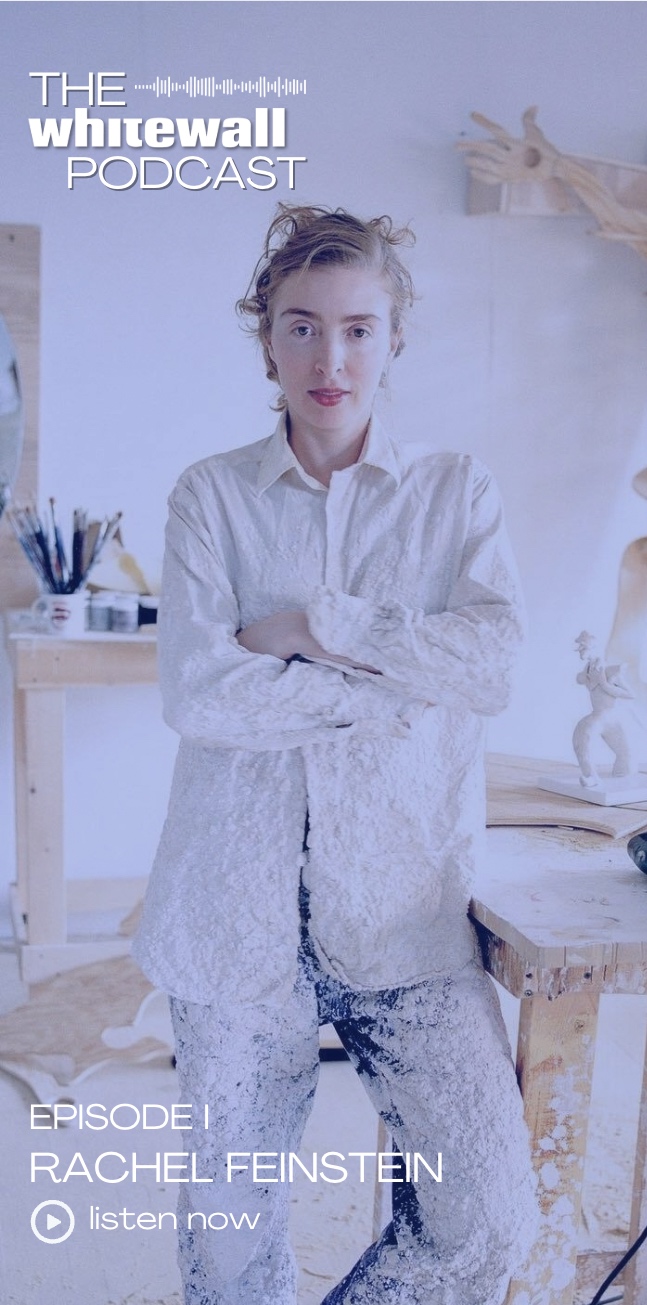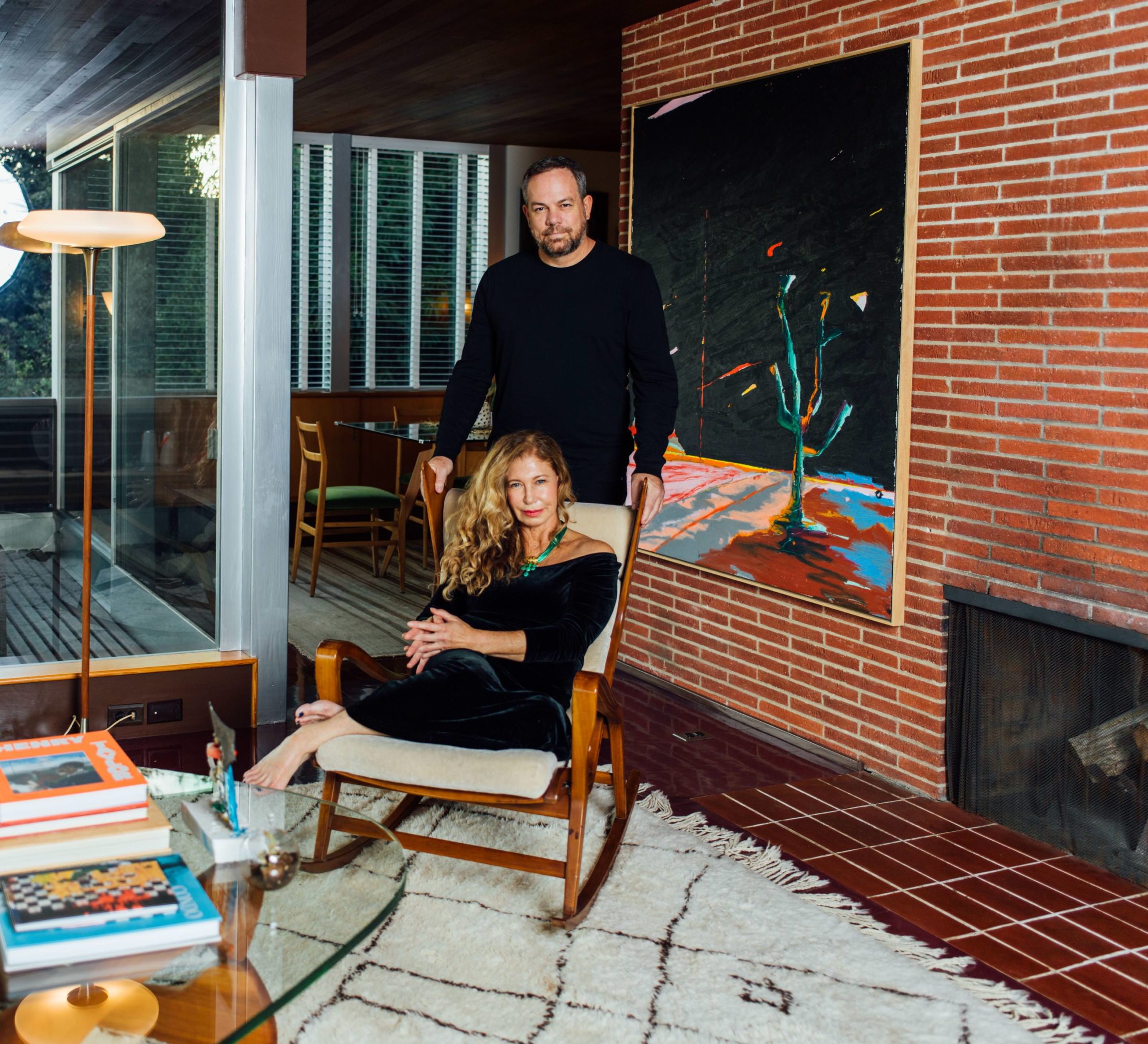“Dennis Hopper: The Lost Album” is currently on view at Kohn Gallery in Los Angeles. The exhibition, on view through September 1, includes 400 photographs taken by the artist in the ‘60s, originally shown at the Fort Worth Art Center Museum in 1970.
The works were found in a box by Hopper’s family after his death. They hadn’t been seen or touched since the exhibition in Fort Worth came down. Everything was there—show notes, diagrams, unique groupings, and more. Hopper made the selection of photos himself, which makes “The Lost Album” even more special. His daughter, Marin Hopper, eventually connected with the curatorial team Claudia Bohn-Spector and Sam Mellon of MICRONAUT to hang the works in a contemporary context at Kohn Gallery.
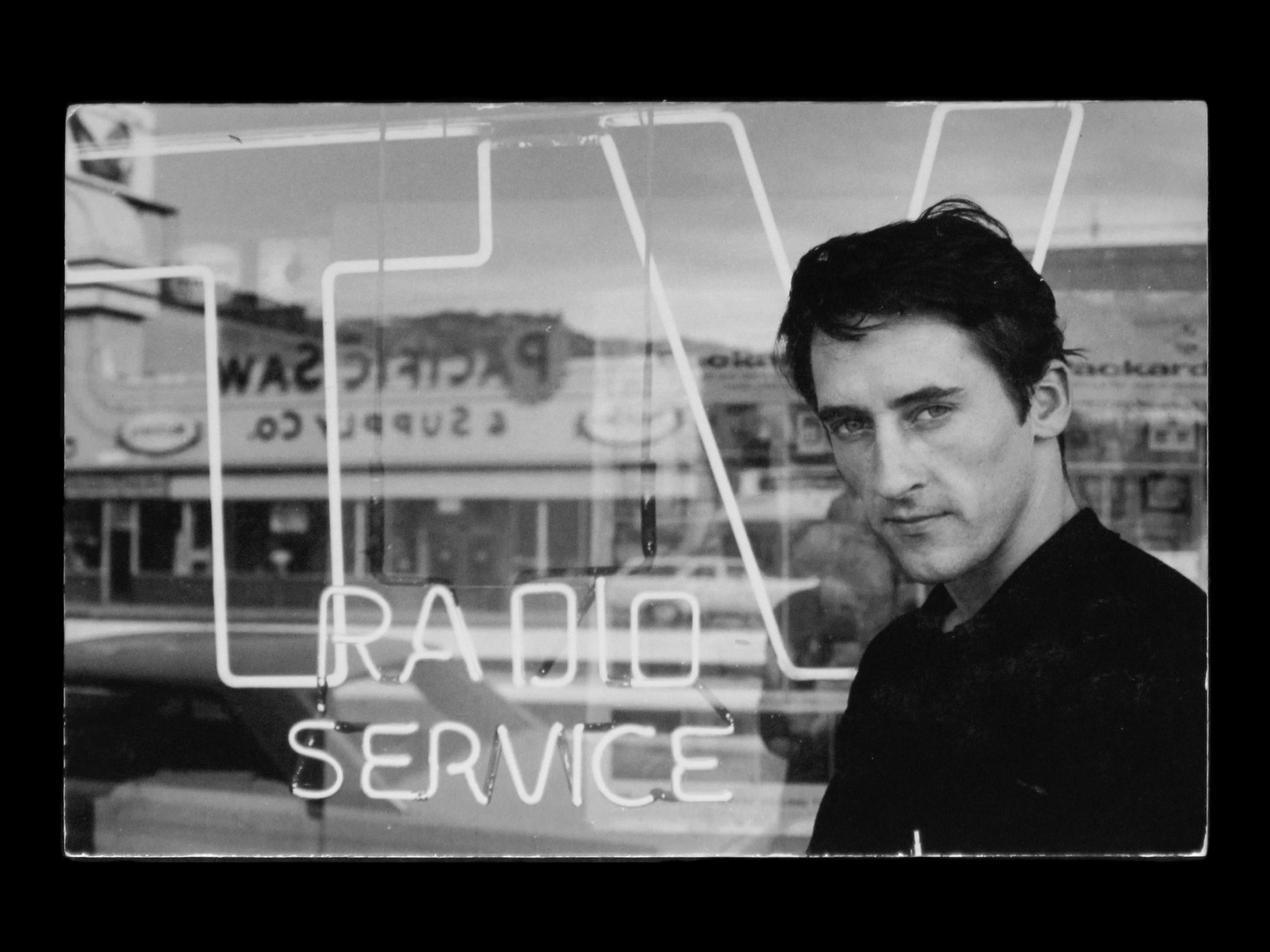 Dennis Hopper, Ed Ruscha, 1964, Gelatin silver print mounted on cardboard, 6 2/5 x 9 4/5 inches. Courtesy of The Hopper Art Trust and Kohn Gallery.
Dennis Hopper, Ed Ruscha, 1964, Gelatin silver print mounted on cardboard, 6 2/5 x 9 4/5 inches. Courtesy of The Hopper Art Trust and Kohn Gallery.
Whitewall spoke with Marin and Bohn-Spector about how it all came together.
WHITEWALL: How was this collection of 400 photographs unearthed after Dennis Hopper’s death?
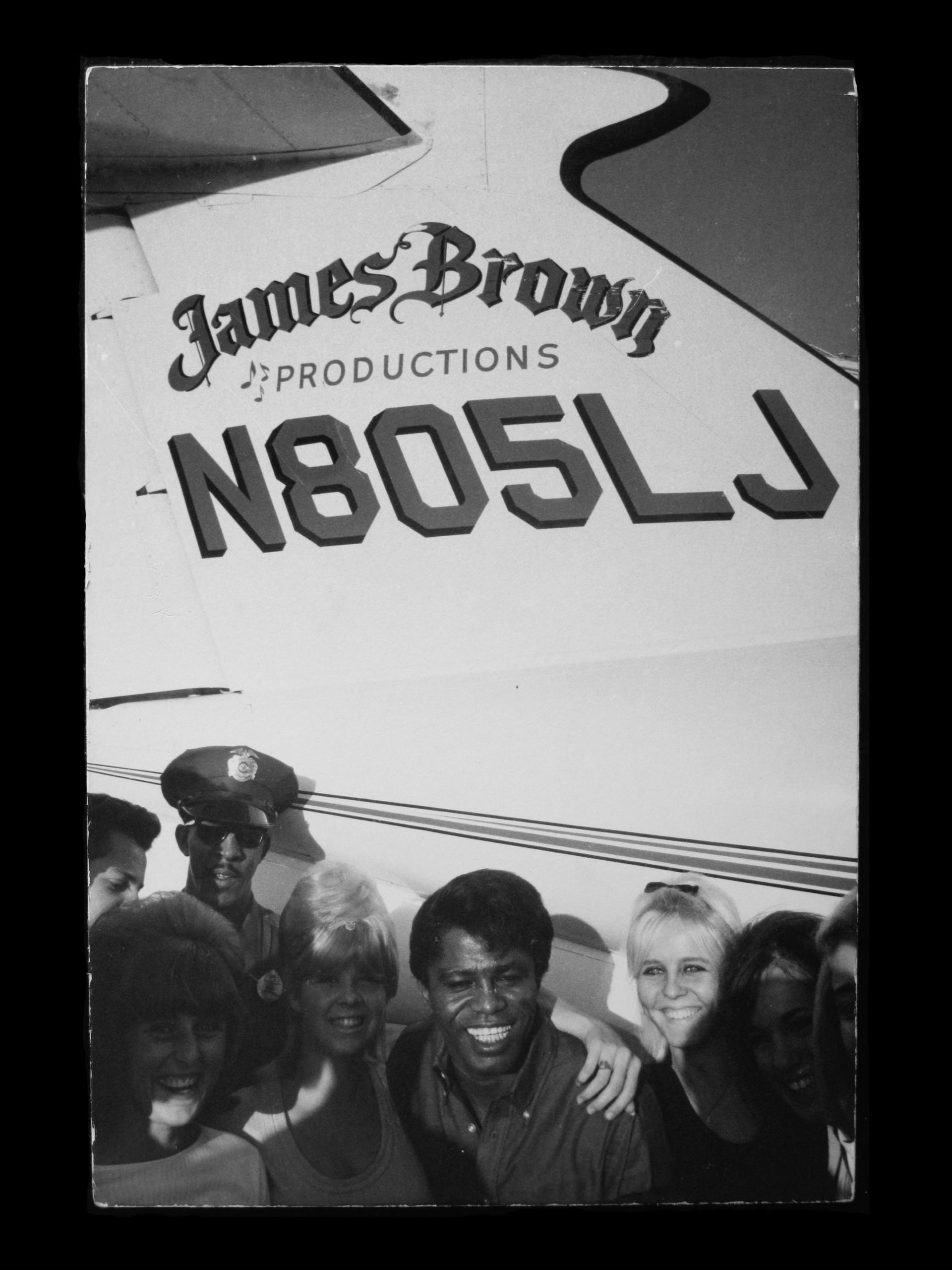 Dennis Hopper, James Brown, 1964, Gelatin silver print mounted on cardboard, 6 2/5 x 9 4/5 inches. Courtesy of The Hopper Art Trust and Kohn Gallery.
Dennis Hopper, James Brown, 1964, Gelatin silver print mounted on cardboard, 6 2/5 x 9 4/5 inches. Courtesy of The Hopper Art Trust and Kohn Gallery.
MARIN HOPPER: We found them after my father died when we were moving things out of his house. They hadn’t been shown or seen since the exhibition. It’s exciting because it’s this incredible edit of his own photographs. It was a very famous show that he talked a lot about. We were very surprised to find it in the garage in a box—all these photographs and the original plans. It was packed when the show came down in 1970, brilliantly laid out with all the notes.
WW: How does this exhibition re-envision that show?
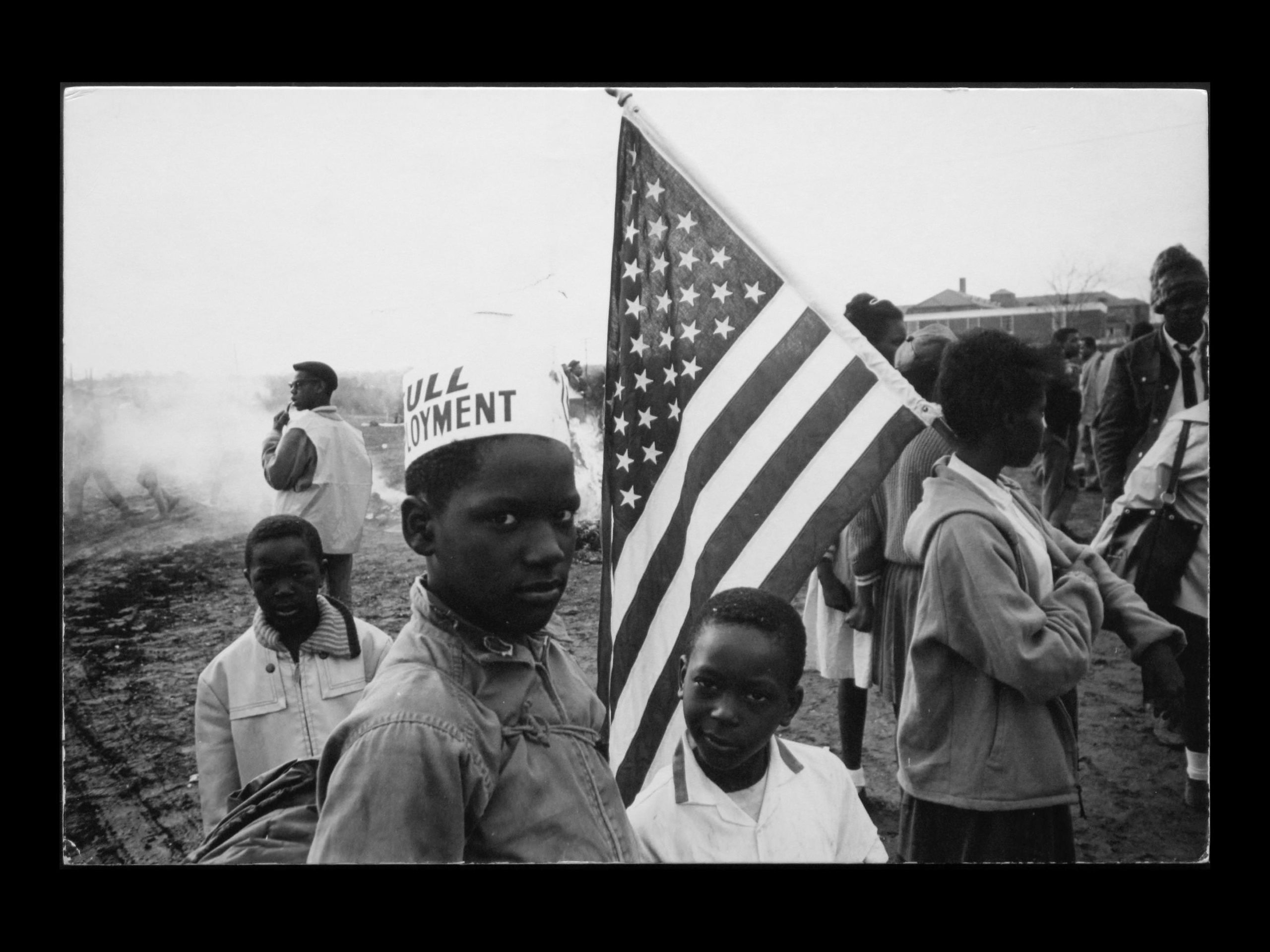 Dennis Hopper, Selma, Alabama (Full Employment), 1965, Gelatin silver print mounted on cardboard, 6 2/5 x 9 4/5 inches. Courtesy of The Hopper Art Trust and Kohn Gallery.
Dennis Hopper, Selma, Alabama (Full Employment), 1965, Gelatin silver print mounted on cardboard, 6 2/5 x 9 4/5 inches. Courtesy of The Hopper Art Trust and Kohn Gallery.
CLAUDIA BOHN-SPECTOR: This exhibition follows Hopper’s original design of the exhibition. It includes every photograph he selected in the exact order in which it was shown. Revisiting the show, we identified roughly 12 thematic areas, loosely defined, which we introduced with small panels showing Hopper himself and presenting statements by him that elucidate his practice. The idea was to have the visitor “hear” Hopper’s voice as if he was right there, introducing his show. We also provided very limited curatorial commentary to provide context for Hopper’s work.
WW: What are some of the iconic works of Hopper on view?
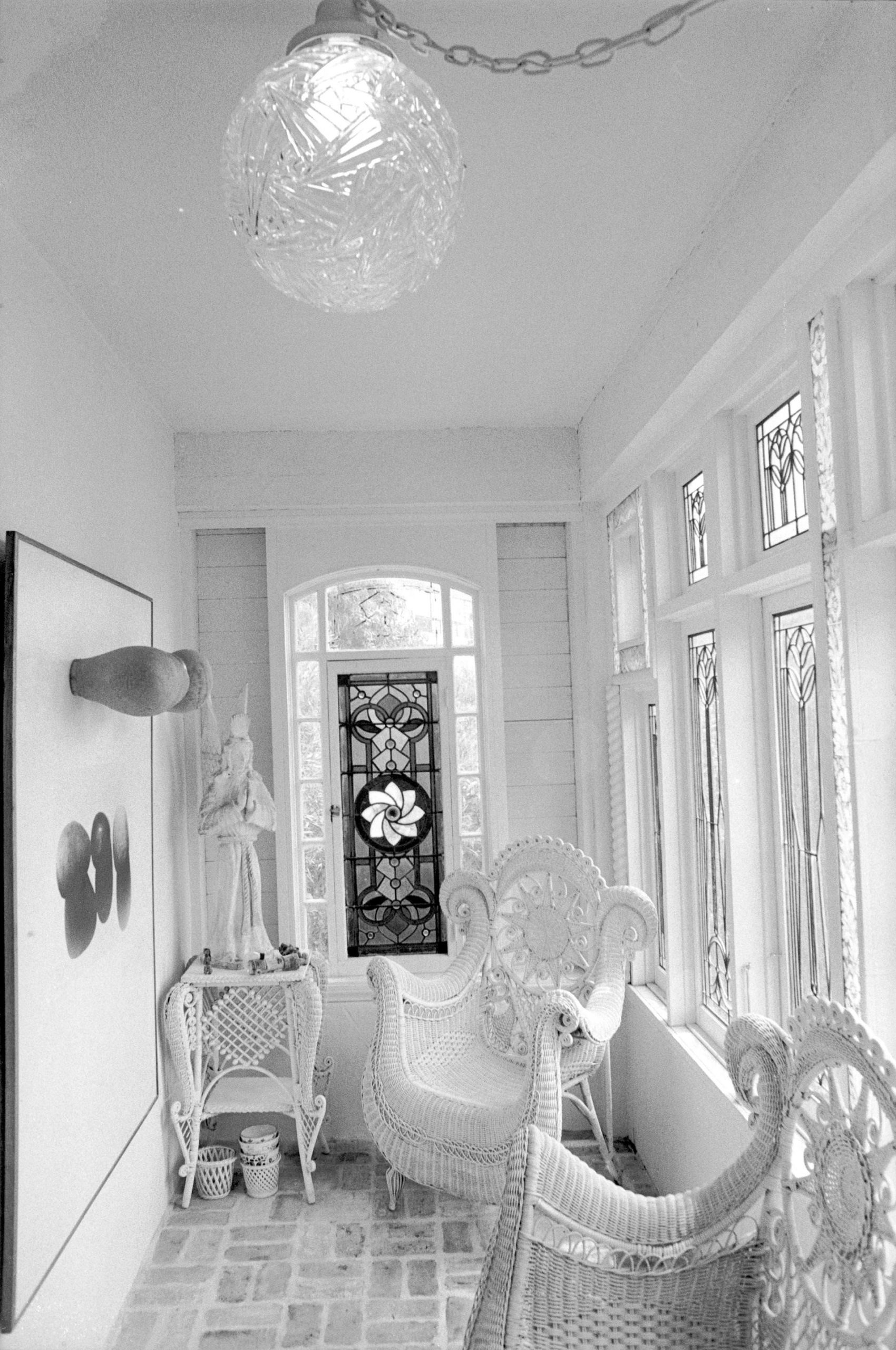 Dennis Hopper, Hopper house (pourch with chiaroscuro), 1961-67, Gelatin silver print mounted on cardboard, 6 2/5 x 9 4/5 inches. Courtesy of The Hopper Art Trust and Kohn Gallery.
Dennis Hopper, Hopper house (pourch with chiaroscuro), 1961-67, Gelatin silver print mounted on cardboard, 6 2/5 x 9 4/5 inches. Courtesy of The Hopper Art Trust and Kohn Gallery.
CB-S: There are many, including portraits of famous actors, musicians, and artists. Double Standard, arguably Hopper’s most famous image, is also on view.
MH: The body of work shows my father’s eye in terms of filmmaking. And the size of the photographs is extraordinary, there’s an intimacy [there]. I am so familiar with his work, some of it is iconic, but they are put in these groups in such a small size, it’s mind-blowing to me. It all comes together in such a story telling, storyboard kind of way. This show speaks to his passion and his discipline in terms of being a photographer and a filmmaker. He was a really disciplined photographer. There is a real discipline toward his work and shows. He really wanted to be remembered as a photographer, not as an actor or director taking pictures.
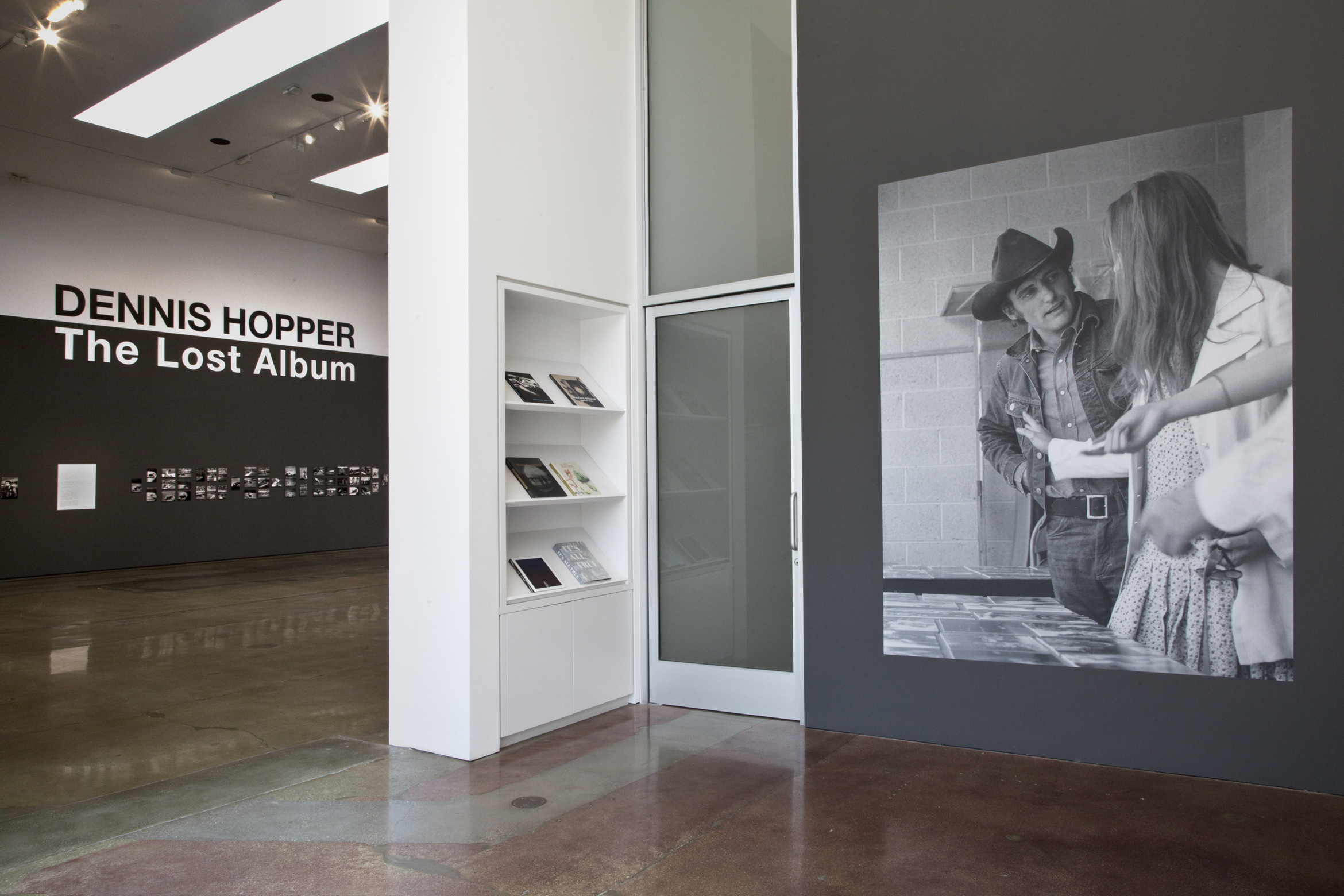 “Dennis Hopper: The Lost Album,” Installation view at Kohn Gallery, 2017. Courtesy of The Hopper Art Trust and Kohn Gallery.
“Dennis Hopper: The Lost Album,” Installation view at Kohn Gallery, 2017. Courtesy of The Hopper Art Trust and Kohn Gallery.
WW: Are there key examples of his experimentation with the medium in the show?
CB-S: I think they can all be viewed as examples of this kind of experimentation. “The Lost Album” is important as a “totality” of images, showing an almost encyclopedic reach into what was going on at the time.
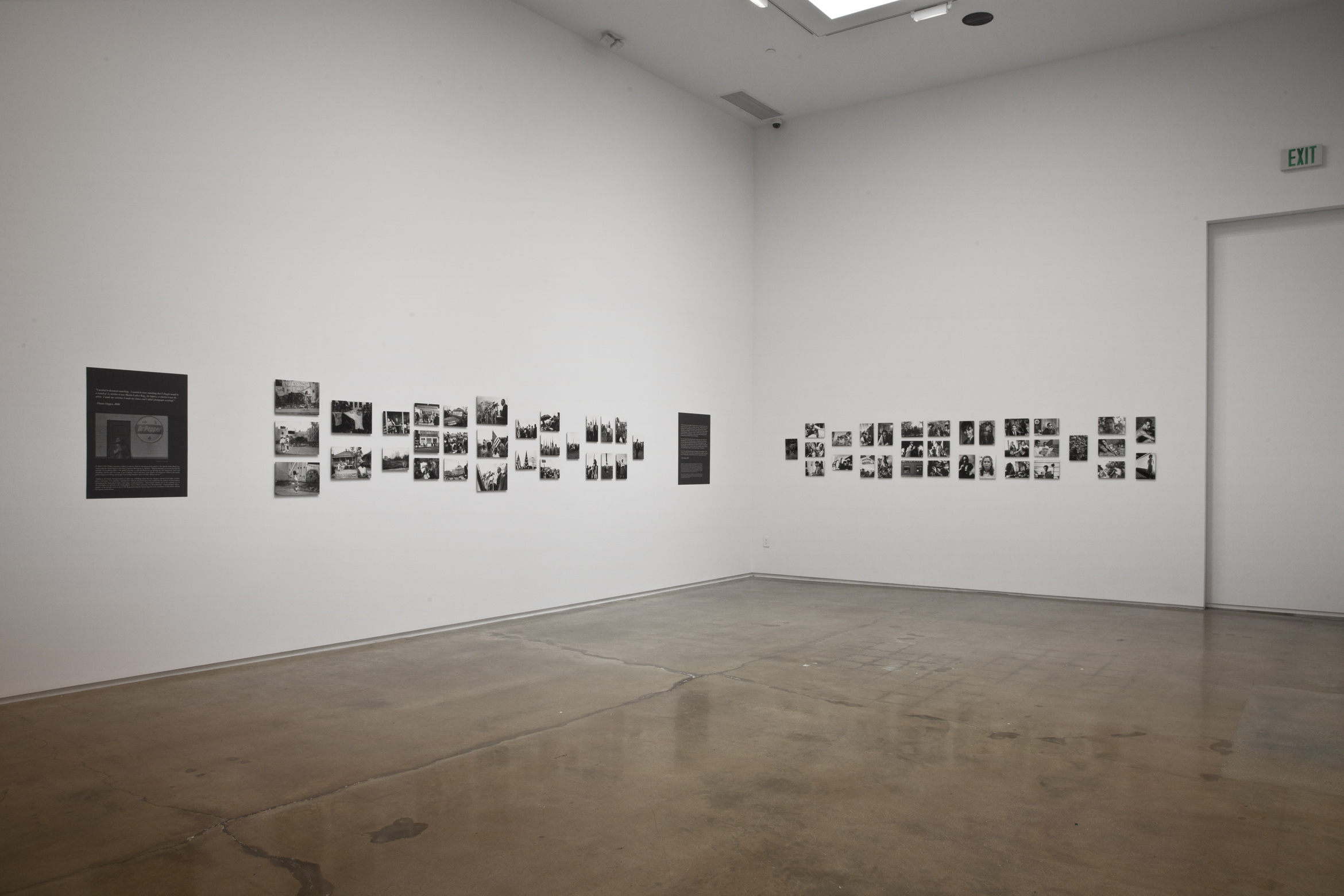 “Dennis Hopper: The Lost Album,” Installation view at Kohn Gallery, 2017. Courtesy of The Hopper Art Trust and Kohn Gallery.
“Dennis Hopper: The Lost Album,” Installation view at Kohn Gallery, 2017. Courtesy of The Hopper Art Trust and Kohn Gallery.
WW: Hopper was part of the ‘60s art scene in Los Angeles, and the exhibition shows some works by those contemporaries. What works are on view?
CB-S: These are works by artists that Hopper knew and/or collected and photographed. We selected works by them from the 1960s to provide a context for Hopper images from the same time. This is what these friends of Hopper’s were working at precisely the time that he took their portraits.
MH: He had very strong relationships with artists, and he bought their work as a friend would. They were inspired by each other. There was a whole kind of synergy. Photography was a very large and serious part of his creative outlet. He had such a great eye, not only for collecting but for making art. He was a very creative guy and this show really speaks to his legacy.
WW: How do you think these photos from the ‘60s read or find relevance today?
CB-S: They are the collective evidence of one individual’s search for meaning and creative expression at a time of profound personal and cultural change. They are interesting as historical artifacts, and there is a subtle type of “universality” to them that resonates today, when we find ourselves, again, in an era that will probably also go down in history as a time, when things shifted into new and different gears.
The exhibition is on view at Kohn Gallery through September 1, 2017.







